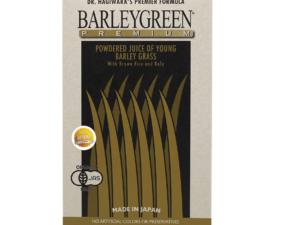
Did you know that 38% of chronic disease risks could be lowered by simply eating enough fiber? Many Malaysians overlook this powerhouse nutrient, yet it plays a vital role in digestion, heart wellness, and even blood sugar balance.
Fiber isn’t just about regularity—it supports gut bacteria, cleanses the colon, and may reduce risks of serious conditions. Local favorites like durian, guava, and brown rice pack a fiber punch, but most diets still fall short.
Wellness Group specializes in guiding Malaysians toward smarter nutrition. Whether it’s swapping white rice for whole grains or adding legumes to meals, small changes deliver big rewards. Need advice? Reach out via WhatsApp at +60123822655 during business hours.
Key Takeaways
- Fiber lowers chronic disease risks by 38% with consistent intake.
- It supports gut health, blood sugar control, and heart wellness.
- Malaysian staples like durian and brown rice are fiber-rich.
- Soluble and insoluble types offer unique advantages.
- Wellness Group provides tailored nutrition guidance.
Why Fiber Is Essential for Your Health
From gut protection to blood sugar control, fiber works silently but effectively. It fuels your body’s defenses, from easing digestion to slashing chronic disease risks. For Malaysians, embracing fiber-rich local foods like oats and brown rice can be a game-changer.
How Fiber Supports Digestion

Click to 了解更多
Insoluble fiber, like the 2.8g found in 100g of carrots, adds bulk to stools. This prevents *constipation* and keeps your gut moving smoothly. Meanwhile, soluble fiber—abundant in oats—forms a gel that slows glucose absorption.
When gut bacteria ferment fiber, they produce butyrate. This fatty acid strengthens *colon* walls and reduces inflammation. Aim for 25g daily—it’s linked to a 23% lower colorectal cancer risk.
The Role of Fiber in Chronic Disease Prevention
Malaysia’s rising diabetes rates highlight fiber’s importance. Viscous fiber, like that in guava, stabilizes blood sugar. Studies also tie higher *fiber intake* to reduced heart disease risk.
Compare *whole grains*: brown rice (insoluble) aids digestion, while oats (soluble) lower cholesterol. Both *may help* curb Malaysia’s top health threats—diabetes and heart disease.
Health Benefits of Fiber You Should Know
Many people underestimate how much fiber impacts overall wellness. This powerhouse nutrient does more than aid digestion—it transforms how your body functions daily. From balancing blood sugar to protecting your heart, the advantages are too significant to ignore.

Boosts Gut Microbiome Health
Your gut houses trillions of bacteria that rely on dietary fiber. When these microbes break it down, they produce short-chain fatty acids. These compounds strengthen the colon lining and reduce inflammation.
Foods like chia seeds act as fuel for beneficial bacteria. Just 100g contains 34.4g of fiber, making them a simple addition to smoothies or yogurt. A diverse gut microbiome also supports immunity and mental clarity.
Helps Manage Blood Sugar Levels
Soluble fiber, found in oats and apples, forms a gel-like substance in your gut. This slows down carbohydrate absorption, preventing sudden spikes in glucose. Studies show viscous fiber can reduce post-meal sugar surges by 40%.
For Malaysians concerned about diabetes, this effect is crucial. Swapping white rice for quinoa or barley offers an easy way to incorporate more soluble fiber into meals.
Supports Heart Health by Lowering Cholesterol
Heart disease causes 35% of deaths in Malaysia—a startling statistic. Fiber helps combat this by binding to cholesterol in the digestive tract. Research indicates that 6.7g of soluble fiber daily can lower LDL cholesterol by 5%.
Oats, beans, and flaxseeds are excellent choices. Including them regularly in your diet contributes to long-term cardiovascular protection.
| Fiber Type | Food Sources | Key Benefits |
|---|---|---|
| Soluble | Oats, apples, beans | Lowers cholesterol, stabilizes blood sugar |
| Insoluble | Whole wheat, carrots, nuts | Promotes regularity, supports gut health |
For more insights on how fiber enhances wellness, explore this detailed guide. Small dietary changes today can lead to significant health improvements tomorrow.
Types of Fiber and Their Unique Benefits
Not all fiber works the same way—understanding the two types unlocks their full potential. Soluble and insoluble fibers serve distinct roles, each vital for digestion and long-term wellness. Malaysians can harness both by choosing local staples like oats, legumes, and brown rice.
Soluble Fiber: The Cholesterol Fighter
Soluble fiber dissolves in water, forming a gel that slows digestion. Oats, a breakfast favorite in Malaysia, bind bile acids to reduce LDL cholesterol by 5%. This type also stabilizes blood sugar, making it ideal for diabetes prevention.

Click to 了解更多
Top Malaysian sources include:
- Lady’s fingers: Rich in viscous fiber for heart health.
- Barley: Contains beta-glucans to lower glucose spikes.
- Flaxseed: Adds omega-3s and soluble fiber to smoothies.
Insoluble Fiber: Your Digestive System’s Best Friend
Insoluble fiber adds bulk to stools, preventing constipation. Wheat bran, for example, increases stool weight by 77%. Brown rice, a Malaysian staple, helps prevent diverticulosis by keeping the gut active.
To reduce gas from legumes like lentils:
- Soak them overnight in water.
- Rinse thoroughly before cooking.
- Add cumin or ginger to ease digestion.
| Fiber Type | Key Role | Best Malaysian Sources |
|---|---|---|
| Soluble | Lowers cholesterol, regulates blood sugar | Oats, barley, lady’s fingers |
| Insoluble | Promotes regularity, prevents diverticulosis | Brown rice, whole wheat, leafy greens |
Pairing both types—like oats with chia seeds—maximizes their benefits. Small tweaks, such as swapping white rice for quinoa, can transform your diet effortlessly.
How Much Fiber Do You Need Daily?
Daily fiber needs vary—are you meeting yours? Malaysians require different amounts based on gender, yet only 12% hit their targets. Men need 38g per day, while women thrive on 25g. These numbers exceed WHO’s general guideline of 25–30g, reflecting local dietary gaps.
Recommended Fiber Intake for Men and Women
Malaysia’s guidelines account for regional diets rich in rice and processed foods. For men, 38g supports heart health and digestion. Women’s 25g target aligns with global standards but emphasizes soluble fiber for blood sugar control.
“Sudden spikes in fiber intake can cause discomfort. Increase gradually—aim for 5g more every few days.”
Use this simple calculator:
- Age 19–50: 25g (women), 38g (men).
- Age 51+: 21g (women), 30g (men).
- Active lifestyles: Add 5–10g for increased calorie needs.
Signs You’re Not Getting Enough Fiber
Your body sends clear signals when intake falls short. Watch for:
- Bowel movements less than 3 times weekly.
- Post-meal fatigue or sugar cravings.
- Hemorrhoids from straining.
Hydration is key: Drink 35ml water per gram of fiber to prevent constipation. Overdoing it? Beyond 70g per day risks bloating—stick to gradual increases.
| Group | Daily Target | Top Local Sources |
|---|---|---|
| Malaysian Men | 38g | Brown rice, lentils, guava |
| Malaysian Women | 25g | Oats, chia seeds, leafy greens |
Top High-Fiber Foods to Add to Your Diet
Malaysia offers a treasure trove of fiber-rich foods waiting to be explored. From tropical fruits to hearty legumes, these ingredients make hitting daily targets delicious and affordable. Here’s how to fill your plate for maximum nutrition.
Fruits and Vegetables Packed with Fiber
Local produce shines with fiber content. Petai (stink beans) deliver 5g per 100g, while jackfruit offers 3g per cup. Starfruit, a refreshing snack, provides 4g per 100g—perfect for salads or juices.
Storage tip: Keep leafy greens like kangkung and sawi crisp by wrapping them in damp paper towels. This preserves their fiber for up to 5 days.
Whole Grains and Legumes for Sustained Energy
Pearl barley leads whole grains with 6g per cooked cup. Kidney beans pack 16g per cup—ideal for soups or stir-fries. Lentils, at 10.7g per 100g, are a budget-friendly protein boost.
For traditional twists:
- Add bran to kuih lapis for extra fiber.
- Use brown rice in asam pedas for a hearty, gut-friendly version.
| Food | Fiber (per 100g) | Glycemic Load |
|---|---|---|
| Brown Rice | 3.5g | Medium (20) |
| Quinoa | 2.8g | Low (13) |
| White Rice | 0.4g | High (29) |
Local options often outshine imports. Pearl barley costs 40% less than imported quinoa but offers similar grams of fiber. Prioritize seasonal picks like guava (5g per fruit) for cost-effective nutrition.
Simple Ways to Increase Your Fiber Intake
Boosting fiber doesn’t require drastic changes—just smart swaps. Malaysians can effortlessly enhance their *nutrition* by choosing *fiber-rich foods* already available locally. Start with these easy adjustments to meet daily targets.

Easy Swaps for a Fiber-Rich Diet
Replace common staples with high-fiber alternatives:
- White rice → Brown rice: Adds 3g per serving.
- Roti canai → Wholemeal thosai: Doubles fiber content.
- Instant noodles → Pearl barley: 6g fiber per cup.
Pro tip: Soak legumes overnight to reduce gas. Add cumin or ginger during cooking for easier digestion.
Delicious High-Fiber Recipes to Try
Incorporate these ideas into a 7-day meal plan:
- Breakfast: Oats with chia seeds and guava.
- Lunch: Brown rice with stir-fried petai and tempeh.
- Snack: Air-popped popcorn with flaxseed topping.
For a Malaysian twist, sprinkle chia seeds on cendol—a dessert that now packs extra fiber.
| Swap | Fiber Gain | Local Alternative |
|---|---|---|
| White bread → Whole wheat | +2g per slice | Gardenia Wholemeal |
| Juice → Whole fruit | +3g per serving | Star apple with skin |
For office workers, keep microwave-ready snacks like roasted chickpeas or nuts. Drink *water* consistently to help fiber work effectively.
Conclusion
Boosting fiber intake can slash diabetes risk by 40% while improving digestion. Small, steady changes—like adding 5g weekly—make the transition easier.
Wellness Group offers tailored advice to help Malaysians meet their daily targets. Their nutrition experts create personalized plans using local, fiber-packed foods.
For a quick assessment, message them on WhatsApp at +60123822655. They’re available weekdays 9:30am–6:30pm and weekends 10am–5pm for busy schedules.
Discover more about optimizing your diet with Malaysian superfoods. Start today—your gut will thank you.
FAQ
Why is fiber important for digestion?
Fiber adds bulk to stool, making it easier to pass. It also helps prevent constipation and supports a healthy gut by feeding good bacteria.
Can fiber help lower cholesterol?
Yes, soluble fiber binds to cholesterol in the gut, reducing absorption. Oats, beans, and apples are great choices to help manage levels.
What’s the difference between soluble and insoluble fiber?
Soluble dissolves in water, forming a gel that slows digestion (found in oats, nuts). Insoluble doesn’t dissolve, adding bulk to stool (found in whole grains, veggies).
How much fiber should adults eat daily?
Men need about 38 grams per day, while women should aim for 25 grams. Most people fall short, so gradual increases are key.
What are signs of low fiber intake?
Bloating, irregular bowel movements, or constant hunger may indicate you need more. Fatigue and blood sugar spikes can also be clues.
Which foods are highest in fiber?
Lentils, chia seeds, raspberries, and quinoa pack a punch. Even small swaps like brown rice over white boost intake.
Can fiber help with weight management?
Absolutely! High-fiber foods keep you full longer, reducing overeating. They’re also lower in calories compared to processed options.
Are there risks to eating too much fiber?
A> Overdoing it too quickly may cause bloating or gas. Drink plenty of water and increase intake slowly to let your body adjust.






